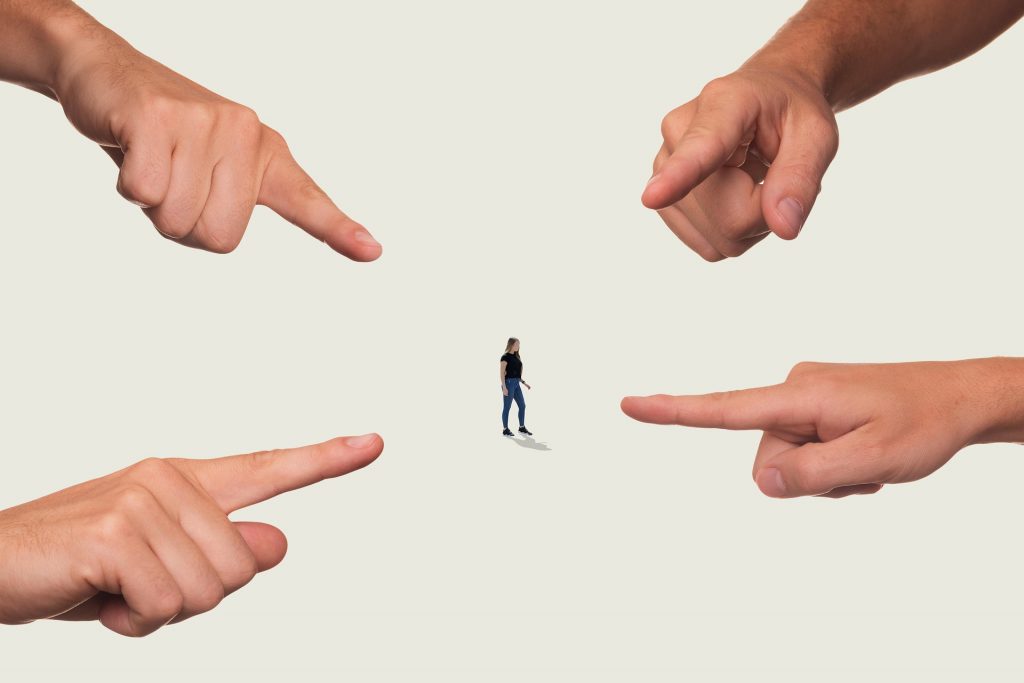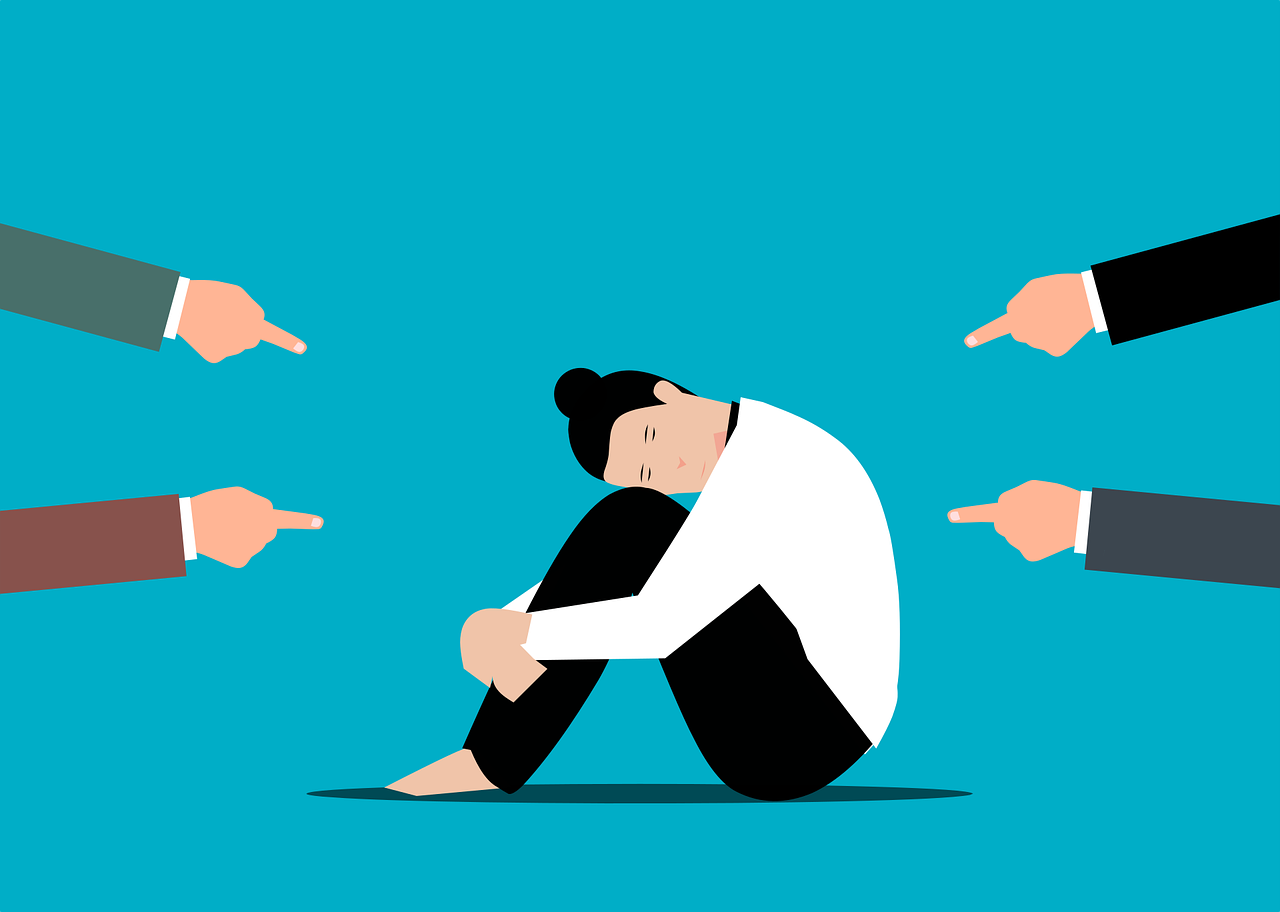Does Adult Bullying Exist? Signs and How to Deal with It
25 July 2023 | 5 mins read
- Employee resources
- Student resources
Let’s sit down for a moment and discuss something both ubiquitous yet often overlooked: adult bullying.

Yes, you heard right. Bullying isn’t exclusive to high school hallways or the schoolyard at recess. It has the uncanny ability to follow us right into our adult lives, silently lurking in the shadows of our workplaces, social media interactions, and even within our circle of family members.
Contrary to what you might think, adult bullying isn’t just a series of harmless pranks at the office or “tough love” at home. It can manifest in a myriad of forms, from constant criticism and negative behavior to more severe forms of bullying like emotional and physical abuse.
But don’t fret! This may seem intimidating, but here’s the best way to approach it: we start by shedding light on it. Knowledge is power, and understanding adult bullying – its forms, its impacts, and how to tackle it – is the first thing to equip ourselves against this hidden foe.
Related read: What is considered harassment? Types & Examples
Understanding Adult Bullying
Now that we’ve got our metaphorical trekking boots on, let’s embark on this journey to demystify adult bullying. I like to think of it as unmasking a villain in a detective novel. Intriguing, isn’t it?
Just like a detective, we need to know our enemy to beat it. So, what is adult bullying exactly? Well, it’s more than just ‘child bullies all grown up.’ Imagine adult bullying as a chameleon. It changes its colors to match the environment, becoming increasingly covert and psychological as we age.
No longer does the bully take your lunch money – Instead, they might spread rumors about you at work, or an online survey you never filled appears on social media, conveniently making you the butt of the joke. These are all different types of adult bullies, operating behind a veil of subtlety.

But bullying isn’t just confined to the boundaries of your workplace or your screens. It can also slip into your personal life, maybe through a family member who constantly criticizes your life choices or a romantic partner indulging in emotional abuse.
A bully is not always the newcomer; sometimes, they’re people we’ve known and trusted for years.
Now, let’s address the elephant in the room: How is adult bullying different from the playground tussle we knew as kids? Well, imagine a little anxiety-inducing mosquito buzzing in your ear – that’s childhood bullying. Annoying, but manageable. Now, replace that mosquito with a swarm of hornets – that’s adult bullying. It’s constant, pervasive, and can cause severe emotional strain and physical harm.
Related read: Bullying vs Harassment: What’s the Difference?
Examples of Adult Bullying
With a clear understanding of what adult bullying is, it’s time to put on our metaphorical lab coats and take a closer look at the different forms it can take. Consider it like ordering at a diner. There’s no “one size fits all.” So, let’s get to it, shall we?
Verbal Bullying
First up is the Workplace Bullying Institute’s special: Verbal Bullying. You’re probably thinking, “Words can’t hurt me,” but just like a spicy meal can cause gastrointestinal changes, verbal bullying can lead to mental health issues.
It includes personal insults, constant criticism, or even silent treatment. These verbal adult bullies don’t use physicality but wield words like weapons, causing deep emotional wounds.
Cyberbullying
Next, we have the Cyber Bully Combo. These bullies find their strength in the anonymity of the digital world.
Cyberbullies can launch a bullying incident through text messages or public shaming on social media. What feels like a few clicks can result in a heavy emotional toll on the victim.

Remember, behind every profile, there’s a real person with real-life outcomes.
Passive Aggressive Bullying
The third variant is the Passive-Aggressive Bully Burger. They might seem like the “soft” option on the menu, but their actions can be as harmful as a food allergy. Their bullying behavior is covert – think constant negative behavior, like undermining your work or spreading rumors behind your back.
Physical Bullying
Finally, we have the “hard-to-swallow” dish – Physical Bullying. This form of bullying is reminiscent of the playground, but instead of stolen lunch money, the stakes are much higher. Physical confrontation in the adult world can range from inappropriate touches to more serious forms of physical abuse.
Understanding these different types is akin to reading the fine print on a contract – you know what you’re dealing with, and that’s the most important thing. This knowledge empowers you to recognize these forms of bullying and take the necessary steps to address them.
Related read: Why Are Girls More Likely to Be Victims of Cyberbullying
The Psychology of Adult Bullies and their Victims
As we continue our expedition into the realm of adult bullying, it’s time to get up close and personal with our silent nemesis. We’re venturing into the mind of the bully now – a bit like entering a maze, but don’t worry, I’ve got the map.

Ever wondered what makes an adult become a bully? Often, it’s not a love for bad behavior but a cocktail of insecurity, power dynamics, and a pinch (or more) of empathy deficiency. Picture a seesaw. For some, the only way they feel “up” is by pushing others “down.” It’s the high school drama reenacted, but with bigger consequences.
Speaking of school, remember the class bully who seemed to have a hard time understanding others’ feelings? Well, studies, including those from the American Psychological Association, have found that many adult bullies also exhibit less empathy.
It’s like trying to appreciate a symphony with earplugs on – they simply can’t grasp the emotional notes their actions strike in others.
Now, let’s flip the coin and look at the typical profile of victims. It’s a common misconception that victims are always the “new employee” or the “quiet one.” But here’s the thing, bullies don’t exclusively target a specific type of adult. In fact, the “most likely to be targeted” trophy doesn’t exist.
Bullies often zero in on anyone who appears different or vulnerable, not unlike a lion targeting the solitary gazelle. It’s not about who the victim is, but rather the bully’s behavior that’s the real issue.
Related read: Are Schools Doing Enough to Stop Bullying?
Strategies for Preventing and Combating Adult Bullying
Alright, we’ve scaled the mountains of understanding, we’ve crossed the rivers of recognition, now it’s time to build our fortress of defense against adult bullying. Picture yourself as a gardener – you’re here to nurture positivity and weed out the negative behavior. Let’s roll up our sleeves and get to work!
First things first, prevention is the best way to keep our gardens – I mean, our lives – free from the pesky weeds of bullying. This can mean fostering a respectful and empathetic culture at work or home, setting clear boundaries on acceptable behavior, and making sure everyone’s on board.
Now, if you find yourself on the receiving end of bullying, remember you’re not alone. Reach out to human resources at work or a trusted friend or family member. Don’t forget to document incidents for future reference; it’s like having a snapshot of every weed you discover.
As for bystanders, you hold immense power. Standing up against bullying isn’t just the victim’s fight; it’s a communal effort. If you witness bullying, lend a hand. Reporting incidents or offering emotional support to the victim can go a long way. Remember the buddy system from grade school? It’s time to bring it back!
Finally, don’t forget the role of self-care in this journey. From trauma-informed therapy to a simple deep breath, ensure you’re taking care of your emotional health amidst the storm. Like the healing process after a physical injury, tackling bullying takes time and care.
Remember, while the journey might be challenging, the destination—a world free from adult bullying—is worth every step. Here’s to stepping forward in strength and solidarity!





